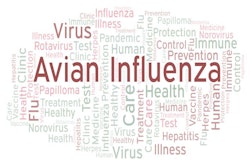
A national outbreak of highly pathogenic avian influenza (HPAI) in the U.S. should end by May 2022, but the export repercussions are unclear.
In a WATT Poultry Chat interview, Dr. Thomas Elam, president of FarmEcon LLC, said key export markets like Mexico and China will set the tone for how the world reacts to the disease in North America.
Austin Alonzo: Let's speak a little bit about the situation with highly pathogenic avian influenza in the turkey industry.
Thomas Elam: Just in the last two weeks, we've seen a significant step up in the rate of positive flocks being discovered around the country. We'll talk a little bit about the distribution by state here in just a minute.
I've put together one slide that shows the number of turkeys that have been destroyed by date, daily since the outbreak began back in the winter. You can see on this slide how that rate has increased significantly in the last two, two and a half weeks. And it shows no signs of abating.
Now, the last time, in 2015, when we had that outbreak in the Upper Mississippi Valley, mainly, it went away very suddenly, in May, when the weather's starting to warm up. This one is getting started a little later. And hopefully we'll have exactly the same thing happened this time, come middle of May a month from now this thing will be over.
The reason that it'll be over is that this virus tends to harbor itself in cool water and cool weather. And when the weather starts to warm up, it doesn't do very well at all. We know this time it's wild birds because we can look at the APHIS detections in wild birds and look at what's happening in commercial flocks and they just lay right on top of each other.
This is not probably a case of cross-contamination among farms its just infections coming in from wild birds migrating north. So this next chart shows the number of turkeys destroyed from a HPAI infections by state and if you know anything about the turkey business, you will realize that these are mostly very important turkey production states. So far, we've only lost about 1.8% of the flock. But that number is increasing almost day by day. This is much smaller than the 2015 infections in the Upper Mississippi Valley. But it is significantly more widespread, not only in turkeys, but also in chickens and hens.
If we look at the infections, geographically back in 2015 90% of them were in the central U.S. on the Mississippi migration flyway. This time, it's about half along the Mississippi, about 35% in the central flyway and about 15% along the Atlantic flyway. And that's important because the Atlantic flyway is very important for broiler production. So the the geography has changed significantly, this time around. It is much more widespread. But so far has not reached the intensity in any species that it did last time. The broiler industry has been largely unscathed.
But let's talk about exports because that's where things could really get interesting. So the next chart is going to show you turkey production and the export risks that we face. The states in bold, have had positive HAPI turkey flocks. They represent 79% of the country's total turkey production. And this is where the exports come from. Now some countries have put in bans based on just where the infections are. Other countries will ban by state and there are a few countries like China that may ban the whole U.S.
But, there's no doubt about it going forward, this is going to have a significant impact on our exports depending mainly on what Mexico does. They're over half of our export business. We'll see.
But, again, so far, in terms of number of birds and number of infections, we're now nowhere near where we were in 2015. But this is an on-going saga. And there's no doubt in my mind that we are going to have a yet unknowable impact on exports that will far surpass the impact on production.
So we'll just have to stay tuned here because we don't know what's going to happen over the next three or four weeks but, hopefully this thing will be over by the middle of May like it was in 2015.
This transcript edited for length and clarity.
To learn more about HPAI cases in North American commercial poultry flocks, see an interactive map on WATTPoultry.com.
Read our ongoing coverage of the global avian influenza outbreak.


















